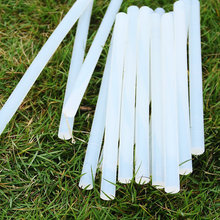Get ready to whine.
If you didn't think this year could possibly get any worse, you're wrong.
On top of all your existing 2016 worries, you now have to deal with the horrifying reality that global wine production has fallen by 5 percent.
As a result of extreme weather events, the International Organisation of Vine and Wine(OIV) reported that since 2015 there have been steep drops in wine production throughout the southern hemisphere.

 SEE ALSO:20 wines you need to drink this fall
SEE ALSO:20 wines you need to drink this fallDuring a recent press conference, OIV Director General Jean-Marie Aurand announced the troubling news that 2016's wine production is among the lowest in the past 20 years.
Mashable Light SpeedWant more out-of-this world tech, space and science stories?Sign up for Mashable's weekly Light Speed newsletter.By signing up you agree to our Terms of Use and Privacy Policy.Thanks for signing up! Though this year's estimated 259 mhl of wine is expected to meet consumer demand (thank goodness), fans of Malbec might have cause for alarm since areas of South America showed the most dramatic decline in production.
Figures show that Argentina's wine production dropped 35 percent this year. Chile, the world's seventh-biggest producer, dropped by 21 percent. And South Africa dipped 19 percent. All of these slowdowns affected production of Malbec and Carménère varieties.
The OIV largely attributed the production decline to climate-related events, reminding us all that global warming directly impacts harvest and should be taken seriously.
 Graph displaying trends in worldwide wine production since 2000, excluding juice and musts.Credit: press release/oiv
Graph displaying trends in worldwide wine production since 2000, excluding juice and musts.Credit: press release/oivAs noted byThe Guardian, the Earth Institute at Columbia University released a report earlier this year stating, "Across the world, scientists have found that each degree centigrade of warming pushes grape harvests forward roughly six or seven days."
The earlier harvests and data compiled suggest that several regions could eventually become too hot for traditionally grown grapes, which would cause vineyards to alter their methods in the future.
Though this year's overall 5 percent decrease sounds grim, it wasn't a poor production year for everyone. Australia, for example, increased production by 5 percent and New Zealand increased by an impressive 35 percent. Way to go, champs.
Even so, if you're reading this article while nervously clutching your throw pillow that says, "When in doubt, drink wine," you might want to consider taking a trip to Italy, which produced the most wine in 2016, followed by France, Spain, the United States, Australia and China.
顶: 46踩: 32599
Newsflash: Climate change is limiting the availability of your beloved wine
人参与 | 时间:2024-09-23 02:36:29
相关文章
- Norris stuns Verstappen at Dutch GP
- Sancho shines as Dortmund deny Bayern fourth straight Super Cup
- 二郎山下的“中医”精神
- 首批17家企业被评为“茂名荔枝”区域公用品牌使用示范基地和示范企业
- Cheap heat
- Korean hiker dies while trekking on US Pacific Crest Trail
- Tesla might stop taking orders for some models amid huge demand
- North Korea's high status at WHO sends wrong message to world: health experts
- The Wonderful World of Christmas Trees
- S. Korea to carry out 1st in





评论专区